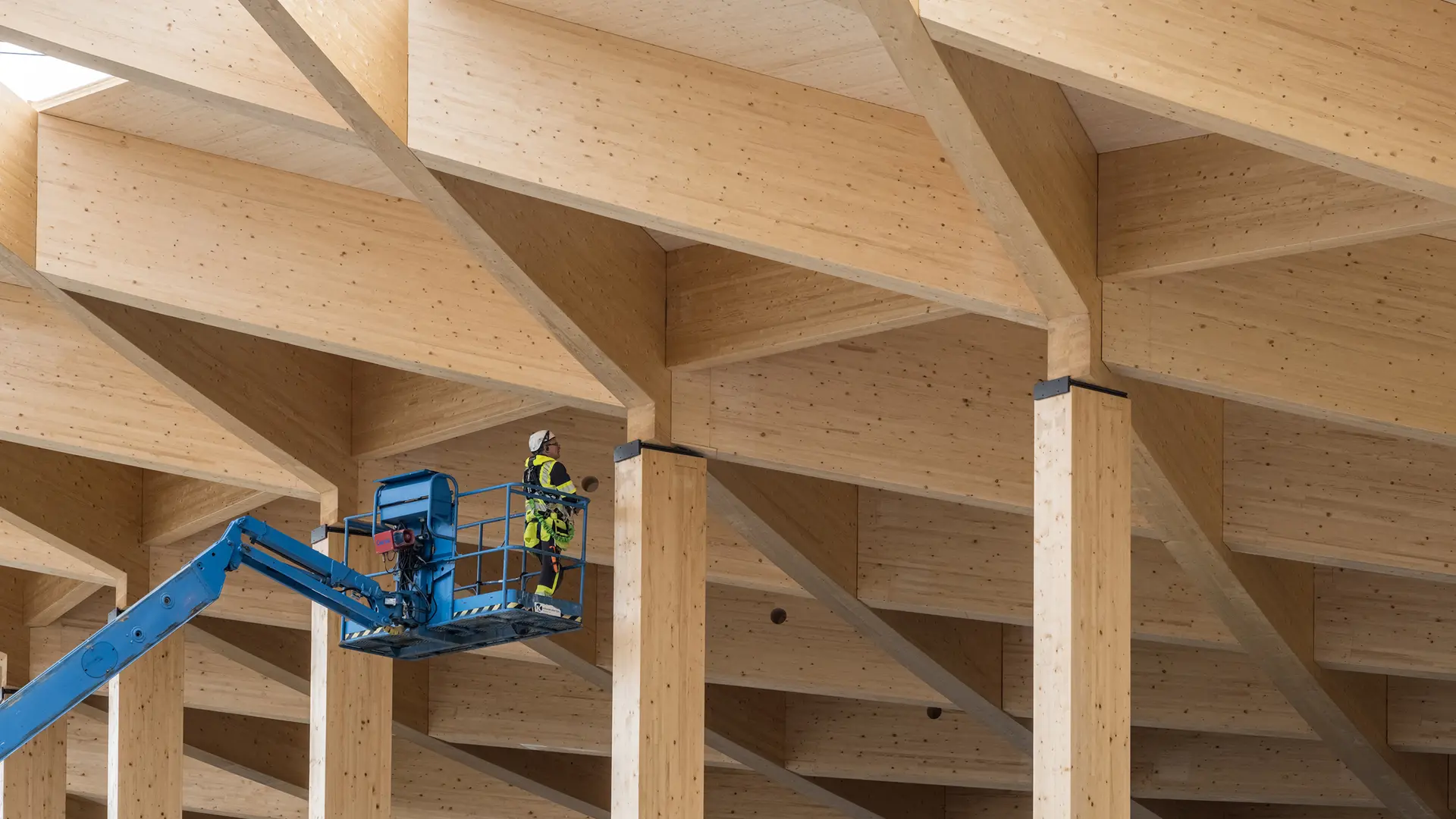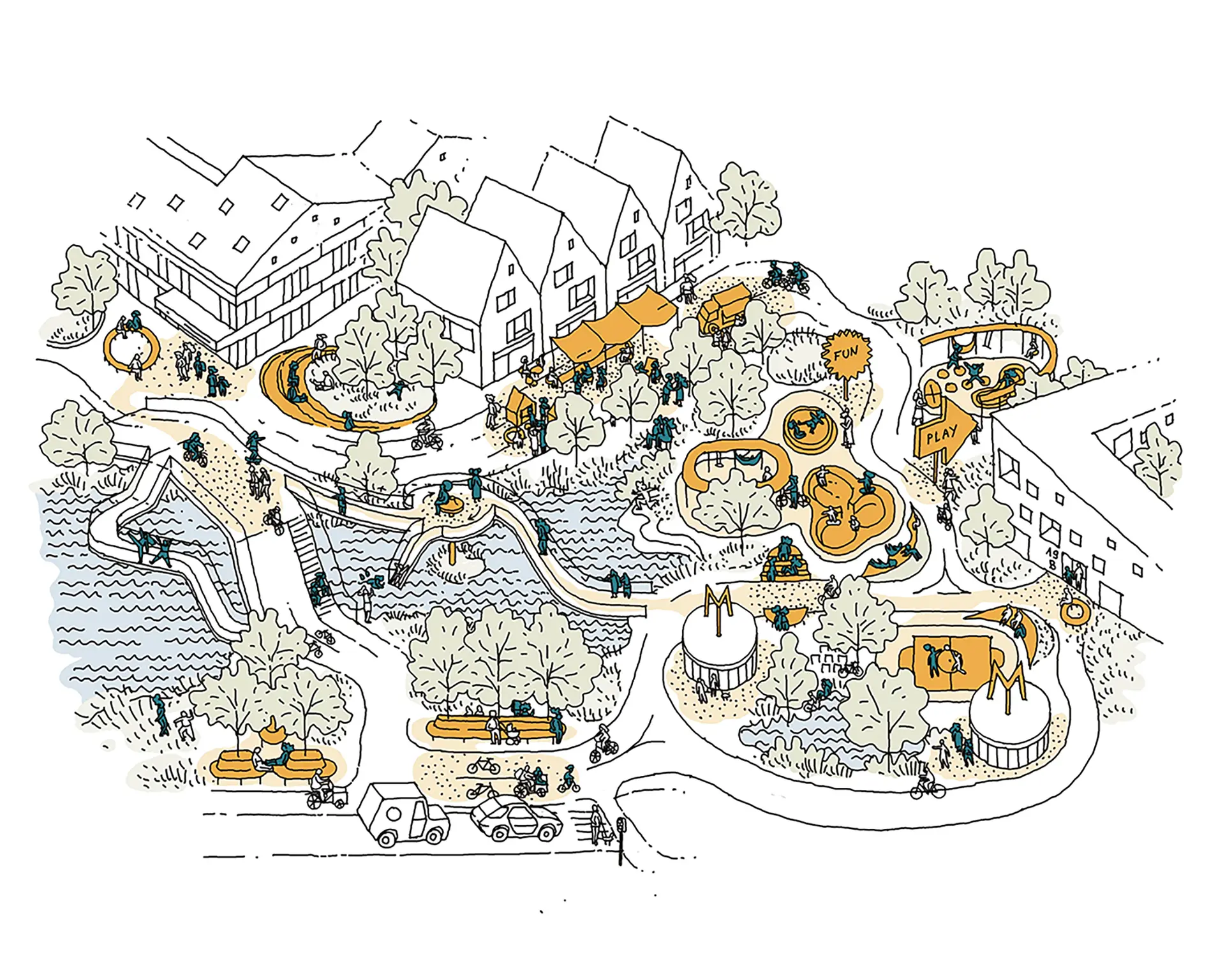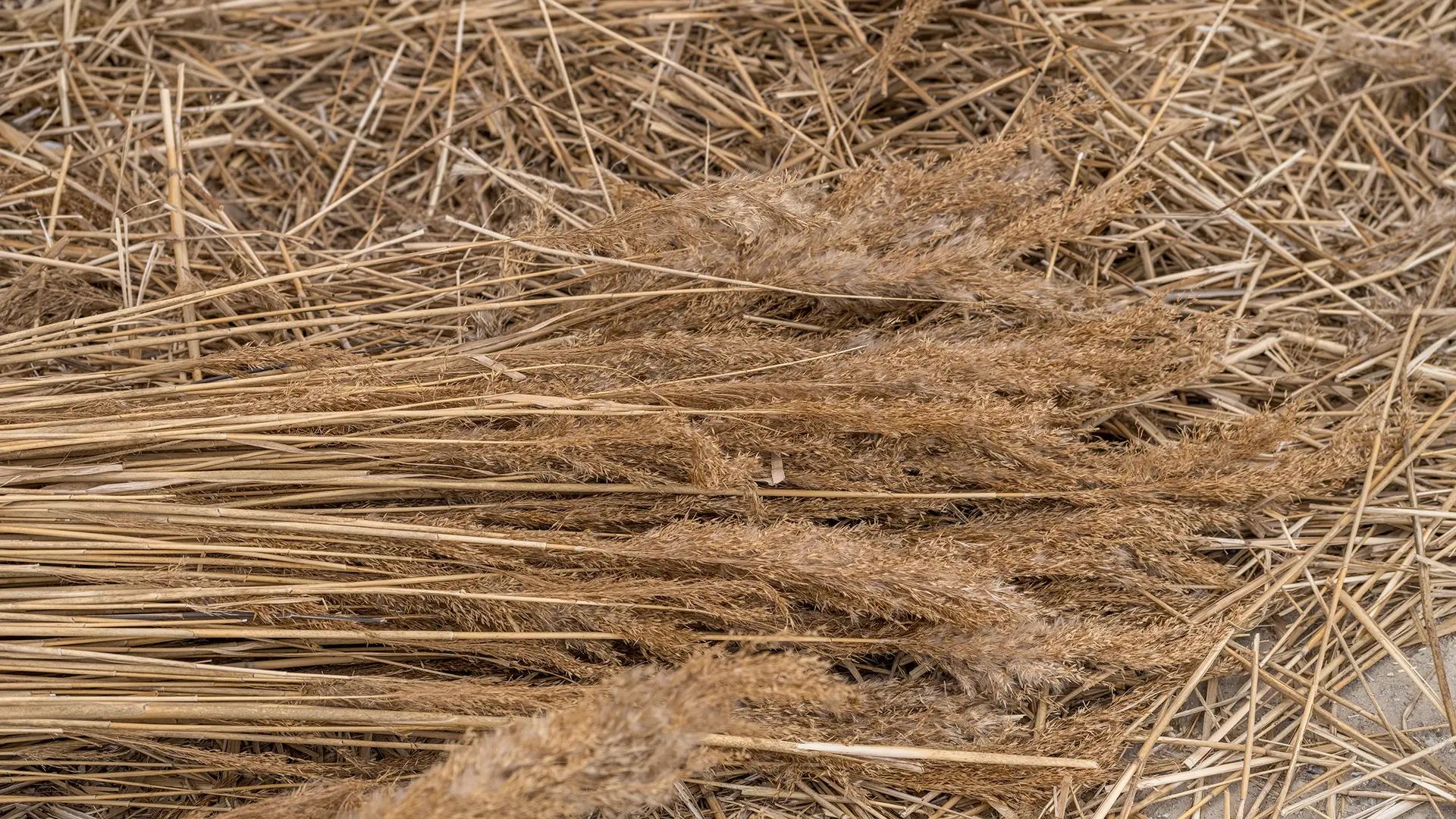Q&A: Timber frames a bright future for sustainable architecture

Wood-structured buildings don’t have to look like log cabins. As wood forms the framework of new high-rises and arenas, we’re looking at how timber construction can create more sustainable, comfortable spaces.
New technology, emerging research and an emphasis on sustainability have brought one of the most traditional building methods back into focus. Fabia Baumann, our new colleague specializing in timber construction, draws on her background in carpentry, engineering, and architecture to explore how wood can help build a greener future.
We haven’t had a wood construction specialist working in the studio before. Where does your interest in timber take root?
Growing up in Switzerland, there was a great deal of wood construction, and my family lived in an old house with a beautiful exposed wooden structure. My granddad was a carpenter – It’s a fairly common job there, and one that people take pride in. My own interest developed gradually – I eventually started doing training and apprenticeship as a carpenter, which I did for three years.
I really loved carpentry, but at the same time, it’s a tough job. You’re working with your hands every day, which takes a toll on your body over time. I decided I wanted to do something more theoretical, but still in the wood industry, because I just fell in love with the materials and the buildings. I later did an internship with Helen & Hard, a studio in Stavanger, Norway with a big focus on timber construction. I’m now studying architectural engineering at DTU and found this position with Henning Larsen.
In the past few years, we’ve seen timber construction on the rise, from high-rises to smaller apartments. What factors have played a role in this resurgence?
I think you can look at this from a historical, technological and ecological perspective. Historically, timber construction was banned or discouraged in some cities. It was considered a fire hazard, and people favored stone construction as a sign of wealth. Today, with better research and safety regulations, we’re allowing more and more wood back into cities.
In terms of fire safety, we can also consider the behavior of the material when it’s actually in a fire, especially compared to steel or concrete. Steel and timber buildings show more warning signs before collapsing, and wood chars on the outer layers, which can protect the stability of the core and slow the burning process. Concrete, for example, tends to just crumble without warning after long exposure to fire. Wood isn’t the risk we thought it once was.
What technological developments have affected timber construction in recent years?
Glued-laminated timber, or glulam, has been rising in popularity and opens up new opportunities for timber construction. It allows us to create large timber elements from many smaller pieces of wood bonded together, so you aren’t as limited by the availability of lumber. Aesthetically and technically it’s easier to deal with and more versatile in construction.
Timber construction has also benefitted from CNC and robotic machining technology, which can precisely and quickly cut traditional joinery connections which used to be very labor intensive, and thus expensive. Traditionally, these wood-on-wood connections were the only way to connect a beam with a column, for example, but it became too expensive because it’s so labor intensive. Now, computerized cutting machines can very easily cut these traditional forms of joinery, so it’s getting used again. In a way, we’ve come full circle.
Where does wood fit into the larger effort to create more sustainable architecture?
If you look at how we source building materials, steel needs immensely high temperatures to be shaped and treated, and the fuel required for this is very CO² intensive. The same goes for the cement kilns necessary for concrete production. Wood, by comparison, almost creates a net reduction in CO², removing it from the atmosphere as the trees grow.
You can think of the tree trunk, and the timber that comes from it, as a sort of CO² containment unit – Trees consume CO² and store it in their cells as they grow while releasing oxygen back into the atmosphere. As long as the material is maintained in a building, the CO² is locked in.
Another thing to consider is the longer life cycle of wood. Suppose a tree gets milled into a large beam for a building. If the building is dismantled, that beam could be cut down and reused and recycled as a smaller structural element, and then further from there – Milled into particle board, then, and perhaps after used to heat a home. You can’t do that with concrete or steel. In this way, wood can take on new roles after being used as a construction material.
Since you joined Henning Larsen in May, what have you been focusing on? Where do you see the future of timber construction with our studio?
My focus is to bring more wood into architecture and to weigh the architectural and engineering decisions to help us use it in the best way.
Because I’m able to get involved with projects from the very beginning of the design phase, I can make suggestions early on that allow us to use timber in the best possible way, rather than coming in after the fact and making adjustments to accommodate wood. This way, everything fits together and works cohesively – it won’t be an afterthought.
Beyond structural considerations, I think my background helps me consider the aesthetic, experiential nature of wood as a material. There is research done to suggest that exposed wood provides an emotional benefit to building users – It gives a cozy, natural feeling, which can help us focus and feel more at ease.
Then again, a wooden building doesn’t necessarily have to look like some idyllic mountain cottage. You can build the core structure in wood and create a much more modern exterior, and still enjoy timber’s structural and environmental benefits. Working here was really just a perfect match because I get the sense that Henning Larsen actively wants to explore timber construction, rather than sidelining it as a second or third choice material. I feel like the studio is ready to invest in our future, to explore how we can bring timber construction to Denmark and beyond.



